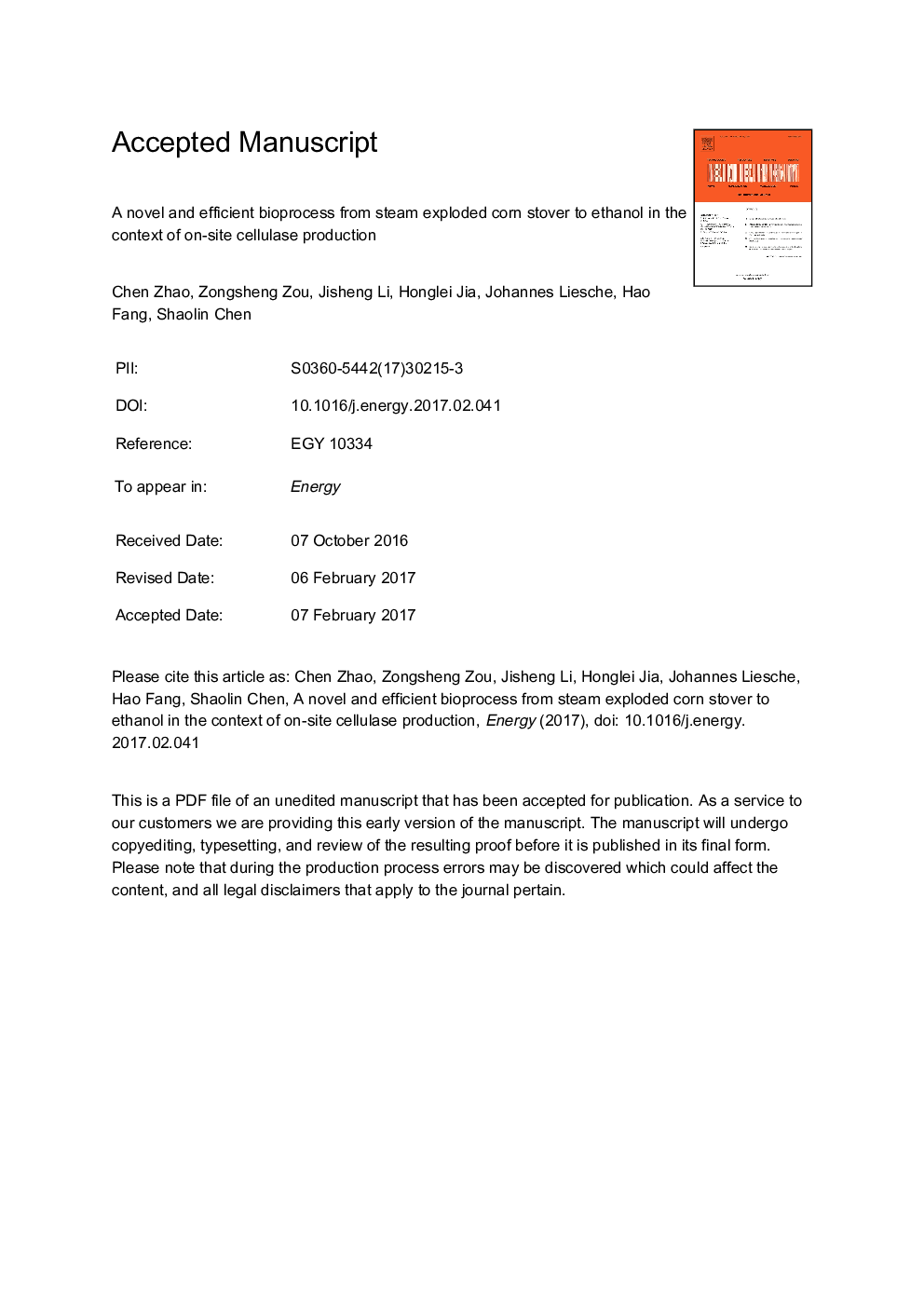| Article ID | Journal | Published Year | Pages | File Type |
|---|---|---|---|---|
| 5476117 | Energy | 2017 | 38 Pages |
Abstract
Saccharomyces cerevisiae, a recombinant S. cerevisiae, Pichia stipistis and an adapted P. stipistis were compared in fermenting steam exploded corn stover (SECS) enzymatic hydrolysate, which contained glucose and xylose, among which S. cerevisiae was found to be the most efficient. The residual xylose in the fermentation broth of S. cerevisiae was concentrated during the distillation of ethanol and fermented by xylose-fermenting yeasts, among which the adapted P. stipistis was found to be the best. As a result, a novel and efficient bioprocess from SECS to ethanol was established, producing approximately 27.00 g ethanol from 111.51 g SECS with an ethanol production rate of 2.50 g/L/h and a yield of 0.24 g ethanol/g SECS, and 58.18 g ethanol from 341.45 g SECS with an ethanol production rate of 2.31 g/L/h and a yield of 0.17 g ethanol/g SECS.
Related Topics
Physical Sciences and Engineering
Energy
Energy (General)
Authors
Chen Zhao, Zongsheng Zou, Jisheng Li, Honglei Jia, Johannes Liesche, Hao Fang, Shaolin Chen,
